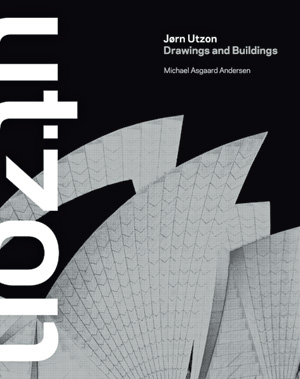This handsome book on Jørn Utzon, the well-known but little-understood 20th-century architect, delves into his work in a way few monographs do. Utzon, who was Danish, is best known for his Sydney Opera House, a brilliant project but one that took many years to build and encountered numerous budgetary and technical problems.

The author, Michael Agaard Andersen, concentrates on Utzon's work rather than his life. Andersen provides little biographical information, though some seeps into the text as he discusses the various building types that the architect explored, along with Utzon's collaborations, competition entries, extensive travels, and respect for landscape. He does not discuss Utzon's buildings and projects chronologically, or by type. Instead, he organizes the book by themes, titled Place, Method, Building Culture, Construction, Materiality, and Ways of Life. In some cases, this is helpful; in others, it is confusing, because he tends to change his point of view from one chapter to another.
Photographs, sketches, plans, perspectives, and various types of detailed drawings illuminate the text, which has many asides and lengthy descriptions of the images, some in minuscule light–sans serif type. The book's graphic design is “modern,” but not very functional.
Jørn Oberg Utzon was born in Copenhagen in 1918 and grew up in Alborg, Denmark, the son of a naval architect. During World War II, while Denmark was occupied by the Nazis, he attended the Royal Danish Academy of Fine Arts, where he studied with Kay Fisker and Steen Eiler Rasmussen. When he graduated, in 1942, he was able to go to Sweden (which was neutral during the war) and join the firm of Gunnar Asplund in Stockholm. After the war, he went to see Alvar Aalto in Finland, traveled to Mexico and the United States (where he visited Frank Lloyd Wright and Charles and Ray Eames). He later journeyed back to Mexico and to India, China, Japan, and Australia. Though he won the competition to design the Opera House in 1957, it was not completed until 1973.
Although less well known than his Sydney masterpiece, two of Utzon's most important buildings are in the Middle East—the Melli Bank in Tehran (1959–62) and the National Assembly of Kuwait, in Kuwait City (1972–85). In Denmark, major works include Bagsværd Church near Copenhagen and the Klingo Houses in Helsingør, while in Sweden there are the Elineberg Housing in Helsingborg and the Planetstaden housing project—all from the 1950s. For his family, Utzon designed two innovative houses in Denmark and two in Majorca. Andersen explains how all these buildings relate to their location's native traditions and landscapes, how they use craft and materials to express their values, and how the architect continued to innovate until his death in 2008. Despite the length and geographic reach of his career, Utzon will be remembered mainly for the Sydney Opera House and Bagsværd Church. Both have daring vaults and interiors that offer otherworldly yet down-to-earth experiences.
Contributing editor Jayne Merkel is author of the book Eero Saarinen.

Post a comment to this article
Report Abusive Comment